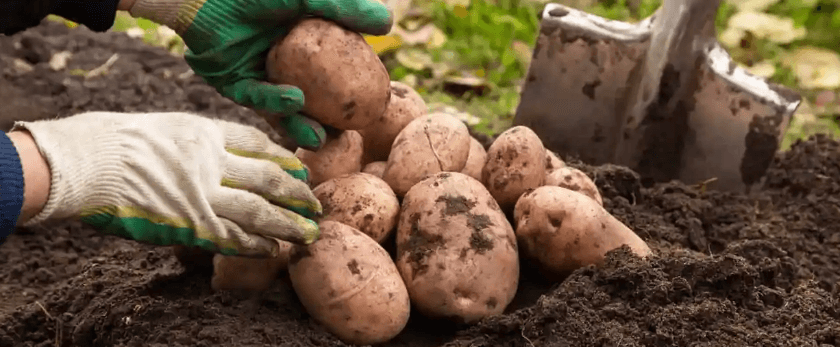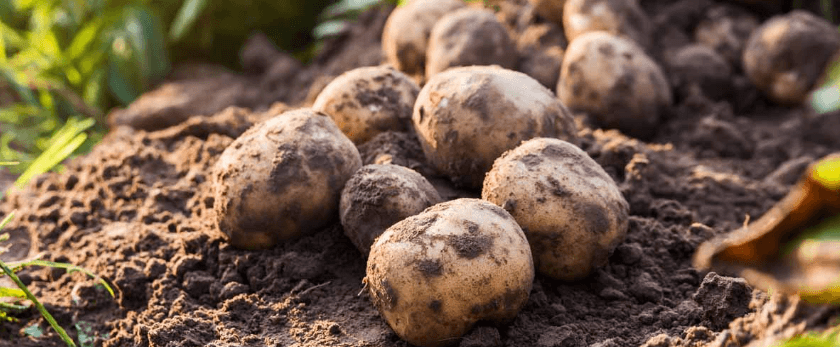Potatoes are a staple food in many households, and they are also one of the easiest vegetables to grow in your own backyard. Not only is it a fun and rewarding experience, but it also helps reduce your carbon footprint by reducing the need for transportation and packaging. In this article, we will guide you through the process of growing your own potatoes, from choosing the right variety to harvesting and storing them.
Choosing the Right Variety
There are thousands of potato varieties to choose from, but not all of them are suitable for home gardening. Some varieties are better suited for commercial farming, while others may not grow well in certain climates. When choosing a variety, consider the following factors:
- Climate: Potatoes grow best in cool climates with well-drained soil. If you live in a warmer climate, look for varieties that are heat-tolerant.
- Space: Some potato varieties require more space to grow than others. If you have limited space, look for compact or dwarf varieties.
- Purpose: Do you want to grow potatoes for baking, boiling, or frying? Different varieties have different textures and flavors, so choose one that suits your taste.
- Disease resistance: Some potato varieties are more resistant to diseases and pests than others. Look for varieties that are resistant to common potato diseases in your area.
Some popular potato varieties for home gardening include Yukon Gold, Red Pontiac, and Russet Burbank. You can also try heirloom varieties for unique flavors and colors.
Planting Potatoes
Potatoes can be grown from seed potatoes, which are small potatoes that have been certified disease-free. You can purchase seed potatoes from a garden center or online, or you can use potatoes from your kitchen as long as they are not sprouting or rotting.
To plant potatoes, follow these steps:
-
Prepare the soil: Potatoes prefer loose, well-drained soil with a pH of 5.0-6.0. If your soil is too acidic, add lime to raise the pH. If it is too alkaline, add sulfur to lower the pH. You can also mix in compost or well-rotted manure to improve the soil's fertility.
-
Cut the seed potatoes: If your seed potatoes are large, you can cut them into smaller pieces, making sure each piece has at least one "eye" or sprout. Let the cut pieces dry for a day before planting to prevent rotting.
-
Plant the potatoes: Dig a trench about 6 inches deep and place the seed potatoes with the sprouts facing up, about 12 inches apart. Cover the potatoes with 3-4 inches of soil.
-
Hill the potatoes: As the potato plants grow, they will produce more tubers along the stem. To encourage more tubers to grow, cover the stems with soil, leaving only the top few inches of the plant exposed. Repeat this process every few weeks until the trench is filled.

Caring for Your Potato Plants
Potatoes require regular care to grow healthy and produce a good harvest. Here are some tips for caring for your potato plants:
Watering
Potatoes need consistent moisture to grow, but they don't like to be waterlogged. Water your plants deeply once a week, making sure the soil is moist but not soggy. In hot weather, you may need to water more frequently.
Light
Potatoes need at least 6-8 hours of sunlight per day. If you live in a hot climate, they may benefit from some afternoon shade.
Soil
Potatoes prefer loose, well-drained soil. Avoid compacting the soil around the plants, as this can hinder tuber growth. You can also add mulch around the plants to retain moisture and suppress weeds.
Fertilizer
Potatoes are heavy feeders and require regular fertilization. You can use a balanced fertilizer or organic options like compost or manure. Apply fertilizer when you plant the potatoes and again when the plants start to flower.
Pruning
Potato plants can become bushy and overcrowded, which can lead to disease and poor tuber development. To prevent this, remove any damaged or diseased leaves and stems. You can also prune the plants to maintain a manageable size.
Harvesting and Storing Potatoes
Potatoes are ready to harvest when the plants start to die back and the leaves turn yellow. Carefully dig up the potatoes with a garden fork, being careful not to damage them. Let the potatoes dry in the sun for a few hours, then brush off any excess soil.
To store potatoes, keep them in a cool, dark, and dry place. Avoid storing them in the refrigerator, as the cold temperature can turn the starch into sugar, affecting the flavor and texture. Instead, store them in a paper bag or a cardboard box in a cool pantry or basement.
Common Problems with Growing Potatoes
Despite their easy-going nature, potatoes can face some common problems. Here are a few to watch out for:
- Pests: Potato beetles, aphids, and wireworms are common pests that can damage potato plants. You can use organic methods like handpicking or neem oil to control them.
- Diseases: Potato blight, scab, and blackleg are common diseases that can affect potato plants. To prevent these diseases, choose disease-resistant varieties and practice crop rotation.
- Environmental factors: Extreme temperatures, drought, and excessive rain can all affect potato growth. Make sure to water and protect your plants during extreme weather conditions.
Conclusion
Growing your own potatoes is a fun and rewarding experience that can also help reduce your carbon footprint. With the right variety, proper care, and responsible disposal methods, you can enjoy a bountiful harvest of delicious and nutritious potatoes. So why not give it a try and start growing your own potatoes today?










